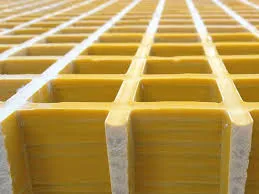loading...
- No. 9, Xingyuan South Street, Dongwaihuan Road, Zaoqiang County, Hengshui, Hebei, China
- admin@zjcomposites.com
- +86 15097380338
- Welcome to visit our website!
Advancements in Glass Fiber Reinforced Polymer Rebar for Enhanced Structural Performance
Glass Fiber Reinforced Polymer Rebar A Revolutionary Construction Material
In the realm of modern construction, innovative materials are consistently emerging, transforming the way structures are built and maintained. Among these advancements, Glass Fiber Reinforced Polymer (GFRP) rebar stands out as a revolutionary alternative to traditional steel reinforcing bars. GFRP rebar, which combines the lightweight properties of polymers with the strength and durability of glass fibers, offers a plethora of advantages that cater to the evolving needs of the construction industry.
Understanding GFRP Rebar
GFRP rebar is composed of a matrix of polymer materials reinforced with glass fibers, providing a high-strength and corrosion-resistant solution for reinforcing concrete. Unlike conventional steel rebar, which suffers from corrosion when exposed to moisture and harsh chemicals, GFRP rebar is immune to such degradation. This property is particularly critical in environments susceptible to extreme weather, chemical exposure, or saline conditions, where traditional materials often fail.
Advantages of GFRP Rebar
1. Corrosion Resistance One of the most significant benefits of GFRP rebar is its resistance to corrosion. This attribute not only enhances the longevity of structures but also reduces maintenance costs significantly. Infrastructure such as bridges, parking garages, and coastal facilities can benefit immensely from the use of GFRP due to its ability to withstand harsh environments without the risk of rusting.
2. Lightweight Composition GFRP rebar is substantially lighter than its steel counterparts, making it easier to handle, transport, and install. This characteristic can lead to reduced labor costs and time savings during construction. Additionally, the lightweight nature of GFRP allows for less burden on supporting structures, which can be especially advantageous in seismic-prone areas.
3. High Strength-to-Weight Ratio Despite being lightweight, GFRP rebar boasts an impressive strength-to-weight ratio. This means that it can bear significant loads, making it suitable for various construction applications without compromising structural integrity.
4. Non-Magnetic and Non-Conductive GFRP rebar is non-magnetic and non-conductive, making it an ideal choice for construction projects in sensitive environments, such as near electronic equipment or in places where magnetic interference could be detrimental.
glass fiber reinforced polymer rebar

5. Sustainability As the construction industry increasingly focuses on sustainability, GFRP rebar presents an eco-friendly option. Its longevity minimizes the need for replacements, and its lightweight nature reduces energy consumption during transportation and handling.
Applications of GFRP Rebar
The unique properties of GFRP rebar lend themselves to a wide range of applications. It is increasingly being used in
- Bridge Construction Due to its corrosion resistance and high strength, GFRP rebar is ideal for reinforcing bridges that face harsh environmental conditions. - Marine Structures In environments exposed to saltwater, such as docks and piers, GFRP rebar offers a long-lasting solution that mitigates the risk of corrosion.
- Parking Garages The use of GFRP in parking structures helps to combat the effects of de-icing salts and moisture, extending the lifespan of these facilities significantly.
- Industrial Applications In factories and industrial sites where aggressive chemicals might be present, the corrosion-resistant nature of GFRP makes it a preferred option for structural reinforcement.
Conclusion
As the construction industry continues to evolve, the integration of innovative materials like glass fiber reinforced polymer rebar demonstrates a commitment to enhancing the durability, sustainability, and efficiency of infrastructure. GFRP rebar not only addresses the challenges posed by traditional materials but also paves the way for smarter construction practices in the future. Whether in bridges, parking structures, or marine applications, the potential of GFRP rebar is vast, heralding a new age in building materials that will shape the skylines of tomorrow.
-
The Rise of FRP Profiles: Strong, Lightweight, and Built to LastNewsJul.14,2025
-
SMC Panel Tanks: A Modern Water Storage Solution for All EnvironmentsNewsJul.14,2025
-
GRP Grating: A Modern Solution for Safe and Durable Access SystemsNewsJul.14,2025
-
Galvanized Steel Water Tanks: Durable, Reliable, and Ready for UseNewsJul.14,2025
-
FRP Mini Mesh Grating: The Safer, Smarter Flooring SolutionNewsJul.14,2025
-
Exploring FRP Vessels: Durable Solutions for Modern Fluid HandlingNewsJul.14,2025
-
GRP Structures: The Future of Lightweight, High-Performance EngineeringNewsJun.20,2025
